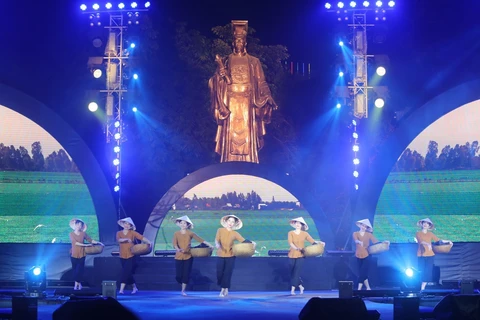Hanoi (VNA) – The capital city of Hanoi is striving to become a green, modern and smart city that is able to be competitive in Asia and the world by 2030.
Creative capital
Hanoi was designated as part of the UNESCO Creative Cities Network on October 30, 2019, according to the municipal Department of Culture and Sports.
With this title, the city reaffirms its commitment to people-centered development.
At a seminar discussing the “Hanoi – creative city” initiative jointly held by the municipal People’s Committee and UNESCO on October 2, Michael Croft, UNESCO Chief Representative in Vietnam, said the city’s development is therefore considered not just by statistics and profits but through the compassion and creativity of its citizens.
Croft suggested Hanoi expand its cooperation with other cities like Seoul (the Republic of Korea), Singapore, Kobe (Japan), Shanghai (China), Bandung (Indonesia), Helsinki (Finland), Montreal (Canada), Berlin (Germany) and Turino (Italy).
However, local strength plays the most important role, he said, highlighting the significance of cooperation between the community, the government, universities, the private sector, friends and international partners in materialising Hanoi’s development strategy.
Deputy Foreign Minister Le Hoai Trung said that the “creative city” title will create a favourable framework for Hanoi to continue maintaining and promoting its other titles recognised by UNESCO for Vietnam’s interests as well as for implementing missions committed by the country and Hanoi to UNESCO.
Secretary of the Hanoi Party Committee Vuong Dinh Hue said that, in order to implement its commitments to UNESCO, Hanoi will put forth long-term programmes and plans of action, and facilitate the creative design sector.
Hue stated that Hanoi sets targets of developing rapidly and sustainably towards becoming a green, modern, smart and competitive city in Asia and the world by 2030; and becoming a city with high quality of life and comprehensively, sustainably developing socio-economic development, and global connectivity by 2045.
With these strategic targets, cultural resources and creativeness are always the foundation and internal strength for the capital building and development, he stressed.
Improving the quality of life
Delegates at the seminar focused their discussion on solutions regarding urban recreation and development with culture at the core, creative education with priority given to arts and science, and the promotion of Hanoi’s image.
The Vietnamese capital became a new member of the network in the field of design, the department said, noting that, although Hanoi is strong at many fields of creativity, it decided to apply for the status in terms of design since this area has wide coverage, is closely linked with other fields, and can reflect the city’s potential and strength in bringing into play its creativity.
It has also met the standards for a creative city of design, including a developed design industry, multiple opportunities for creating designs from natural materials and conditions, and the presence of design groups with frequent activities.
The municipal department said joining the UNESCO network is the first significant step for Hanoi to raise its standing and create a new and more attractive image of the city.
 Chief Representative of UN Habitat Vietnam Dr. Nguyen Quang shares ideas at the seminar (Photo: VietnamPlus)
Chief Representative of UN Habitat Vietnam Dr. Nguyen Quang shares ideas at the seminar (Photo: VietnamPlus) Chief Representative of UN Habitat Vietnam Dr. Nguyen Quang said that urbanisation brings in many opportunities for local residents, but creates a lot of big challenges, including those involved in poverty and inequality.
The final goal of a smart city is to improve the quality of life, increase the efficiency of human resources and natural resources, and connect the government and people, Quang added./.






















